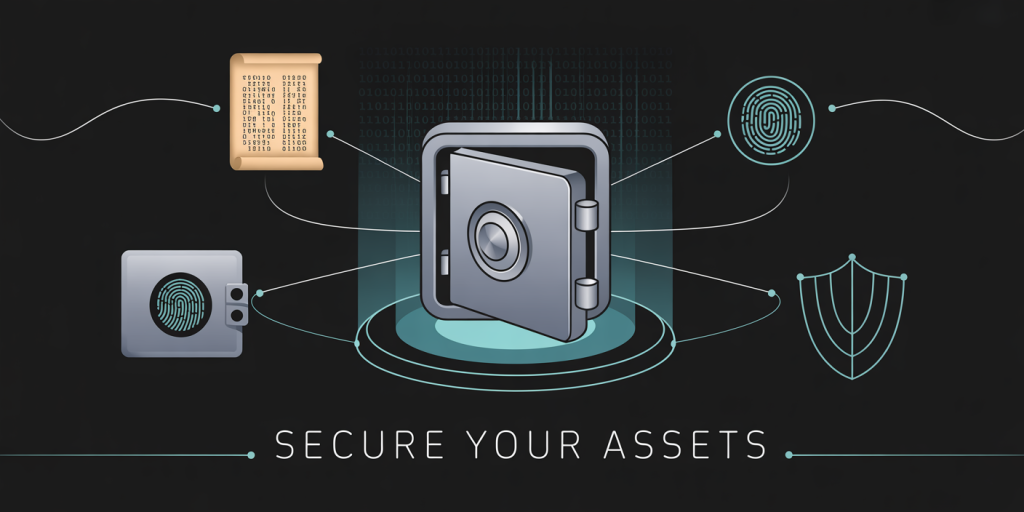In the rapidly evolving landscape of digital finance, cryptocurrencies have transformed from niche assets into mainstream financial instruments. As blockchain technology advances, the need for secure and user-friendly solutions to store and manage these digital assets has become paramount. Crypto wallets serve as the cornerstone of this ecosystem, enabling users to hold, receive, and send cryptocurrencies like Bitcoin, Ethereum, and thousands of altcoins. Understanding the different types of wallets, their functions, security measures, and practical applications is crucial for anyone looking to participate meaningfully in the crypto space.
The rise of decentralized finance (DeFi), non-fungible tokens (NFTs), and tokenized assets further underscores the significance of wallets beyond mere storage. They are gateways to digital commerce, governance participation, and investment strategies, making their role multifaceted. This article breaks down the essentials of crypto wallets, guiding readers through classifications, security, usability, and the future trends shaping this vital component of the crypto ecosystem.
What Are Crypto Wallets and How Do They Work?
A crypto wallet is a software program, hardware device, or even a paper record that allows users to store and manage their cryptocurrency private keys. Unlike traditional wallets that hold physical cash, crypto wallets do not store the coins themselves; instead, they store the cryptographic keys that grant access to the coins on the blockchain. Every crypto transaction involves digital signatures generated by private keys, making wallet security paramount.

For instance, when someone wants to send Bitcoin, their wallet uses the private key to sign the transaction, verifying ownership and permission. The transaction is then submitted to the blockchain network for confirmation. Without a wallet and the corresponding private key, users cannot access or control their digital assets, essentially losing ownership.
Practically, wallets come in many forms, from user-friendly smartphone apps like Trust Wallet and Coinbase Wallet to sophisticated hardware devices like Ledger Nano X and Trezor Model T. Each has its proper use cases depending on the user’s needs, balancing convenience and security.

Categories of Crypto Wallets: Hot vs Cold
Understanding the distinction between hot wallets and cold wallets is fundamental. Hot wallets are connected to the internet, making them convenient for frequent transactions but more vulnerable to hacks. Cold wallets, on the other hand, store keys offline, offering superior security but less accessibility.
Hot Wallets
These wallets are typically software-based—mobile apps, desktop programs, or web extensions—providing quick access to funds. Coinbase Wallet, MetaMask, and Exodus are popular hot wallets used by millions worldwide. According to Statista, in 2023, around 62% of cryptocurrency holders used hot wallets primarily for daily trading and DeFi interactions.
Hot wallets excel in usability. For example, MetaMask integrates seamlessly with Ethereum-based dApps, enabling users to participate in token swaps, yield farming, and NFT marketplaces without leaving their wallet interface. However, their connectivity exposes them to threats like phishing attacks and malware. The infamous 2021 Poly Network hack, which compromised over $600 million in assets, underscored vulnerabilities in wallet interactions with smart contracts, highlighting risks tied to hot wallets and dApps.
Cold Wallets
Cold wallets include hardware wallets and paper wallets, which keep private keys offline. Ledger and Trezor are leading manufacturers in this category. These wallets are ideal for long-term investors holding substantial value, as offline storage dramatically reduces exposure to cyber risks.
For example, a user holding several Bitcoin for years might store their private keys on a hardware wallet disconnected from the internet, signing transactions only when making transfers. The security benefits are significant – Ledger reported fewer than 20 successful hacks among its 1.5 million users as of 2023.
A simple comparative table between hot and cold wallets illustrates these differences:
| Feature | Hot Wallet | Cold Wallet |
|---|---|---|
| Connectivity | Always online | Offline (air-gapped) |
| Security | Vulnerable to cyber attacks | Highly secure against online threats |
| Convenience | Easy to use for frequent transactions | Less convenient, slower access |
| Best Use Case | Daily trading, DeFi, dApps interaction | Long-term storage, large holdings |
| Examples | MetaMask, Coinbase Wallet, Trust Wallet | Ledger Nano X, Trezor, Paper Wallet |
Security Measures and Risks in Crypto Wallets
Despite technological advances, crypto wallets remain targets of cybercrime, making security education vital. Wallet security revolves around protecting private keys, the passwords that unlock a user’s funds on the blockchain.
A fundamental security feature is seed phrases or recovery phrases: a series of 12-24 words generated during wallet creation. These phrases back up wallet keys, allowing recovery if the device is lost or damaged. Users must store these phrases offline and out of reach from unauthorized individuals, since anyone with access can control the wallet.
Phishing and social engineering attacks pose significant threats. For instance, attackers often mimic legitimate wallet provider websites to steal login credentials. In a notable case, a 2022 phishing scam impersonating MetaMask led to over $10 million in user funds stolen globally.
Hardware wallets mitigate many risks by isolating private keys within a secure chip and requiring physical confirmation of transactions. However, supply chain attacks and tampering remain possible if users purchase hardware wallets from unofficial channels, emphasizing the need for buying devices directly from manufacturers.
Additionally, multi-signature wallets offer enhanced security by requiring multiple private keys to approve a transaction. This setup is common among institutional investors. The U.S. Federal Reserve Bank has experimented with multi-sig wallets to control treasury holdings digitally, ensuring no single individual has unilateral access.
User Experience: Ease of Use vs. Security Trade-Offs
Balancing usability and security is a perennial challenge in crypto wallet design. New users often prefer hot wallets for their intuitive interfaces and integration with exchanges, while seasoned users and investors may prioritize cold wallets’ security.
For casual users, wallets like Trust Wallet offer fast setup and integration with popular blockchains, enabling on-the-fly swaps and staking. However, this convenience comes with increased exposure risk. Reports from Chainalysis suggest that about 20% of crypto thefts in 2023 involved compromised hot wallets, often due to user error like sharing seed phrases inadvertently.
On the flip side, hardware wallets, while secure, impose a learning curve. Users must understand transaction signing and device handling protocols. Devices like Ledger Nano S and Trezor Model T come with companion apps to simplify usage, yet some users struggle with backup procedures or connecting wallets, leading to lost funds.
To balance this, some wallets adopt hybrid approaches, such as mobile wallets with hardware wallet connectivity. Coinbase Wallet, for example, allows users to pair with Ledger devices, combining mobile convenience with offline security.
Types of Crypto Wallets: Software, Hardware, and Paper
Delving deeper into wallet types helps clarify choices available to crypto users.
Software Wallets
Software wallets are applications installed on devices, subdivided into mobile, desktop, and web wallets. Mobile wallets cater to casual users needing on-the-go access, while desktop wallets suit users requiring more robust features and control. Web wallets, such as those integrated with crypto exchanges (e.g., Binance Wallet), offer accessibility but often at the expense of control since exchanges hold custody.
Software wallets usually support multiple currencies, with some geared towards specific blockchain ecosystems. For example, MetaMask focuses on Ethereum and compatible chains (like Binance Smart Chain), allowing seamless interaction with smart contracts and DeFi protocols.
Hardware Wallets
Popular among advanced users, hardware wallets are USB-like devices storing private keys offline. They connect only when transactions are signed. Devices like Ledger Nano X support Bluetooth connection to mobile apps, providing both security and improved accessibility.
Hardware wallets appeal especially to institutional actors and high-net-worth individuals who need to safeguard large holdings from online risks. According to a 2023 report by CipherTrace, over $300 billion in assets are stored in hardware wallets globally, emphasizing their role in secure digital asset management.
Paper Wallets
A paper wallet is simply printing private keys and public addresses on a physical medium. While this method offers excellent offline safety, paper wallets are susceptible to loss, damage, and human error. Though largely considered outdated, they serve niche use cases for long-term cold storage, especially among users focused on Bitcoin HODLing—holding on to coins for years.
Real-World Examples and Case Studies
Several events underscore the importance of crypto wallet security and usability. When the decentralized exchange SushiSwap experienced vulnerabilities in 2020, users who relied on hot wallets without proper security measures suffered losses. Meanwhile, those using cold storage avoided these incidents.
Another example is the implementation of institutional custody solutions by companies like Fidelity Digital Assets, which utilize multi-signature and hardware security models to manage billions of dollars in client funds, demonstrating best practices in wallet security and governance.
Consumers have also faced challenges: during the 2022 Luna/Terra collapse, many investors holding tokens in hot wallets lost value instantly. Those who had diversified storage strategies, including offline wallets, were better positioned to safeguard assets and pivot investments swiftly.
The Future of Crypto Wallets: Trends and Innovations
Looking ahead, the future of crypto wallets promises enhanced security, interoperability, and user experience improvements driven by technological innovation.
One prospective development is the rise of smart wallets or programmatic wallets, which incorporate automated features like spending limits, recovery social keys, or conditional transaction approvals. Argent is an example, enabling users to guard assets with social recovery and built-in DeFi integrations, reducing reliance on seed phrases alone.
Layer 2 solutions and cross-chain compatibility also push wallet development forward. Wallets that support seamless movement of assets across different blockchains respond to user demand for liquidity and efficiency. For example, the Rainbow Wallet allows Ethereum users to manage tokens alongside NFTs with intuitive interfaces.
Security protocols will continue evolving with biometric authentication, hardware-enforced enclave technologies, and zero-knowledge proofs enhancing user privacy. The integration of decentralized identity (DID) systems could make wallets not just repositories for assets but holistic digital identities, transforming blockchain usability.

In the institutional realm, regulatory-compliant wallets adhering to AML/KYC standards while preserving decentralization principles will dominate, enabling wider crypto adoption and trust.
In summary, crypto wallets are indispensable tools in the digital asset ecosystem, bridging users to the blockchain world. Whether opting for hot or cold storage, software or hardware, understanding the roles, risks, and technologies involved can safeguard investments and maximize the potential of cryptocurrency participation. With ongoing innovation and growing adoption, crypto wallets will remain at the forefront of digital finance.

Deixe um comentário